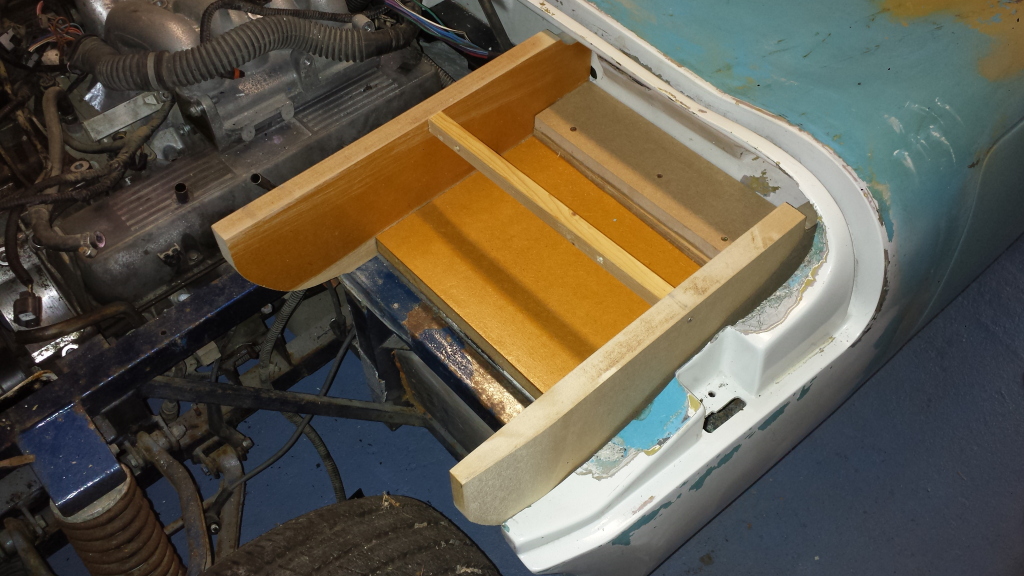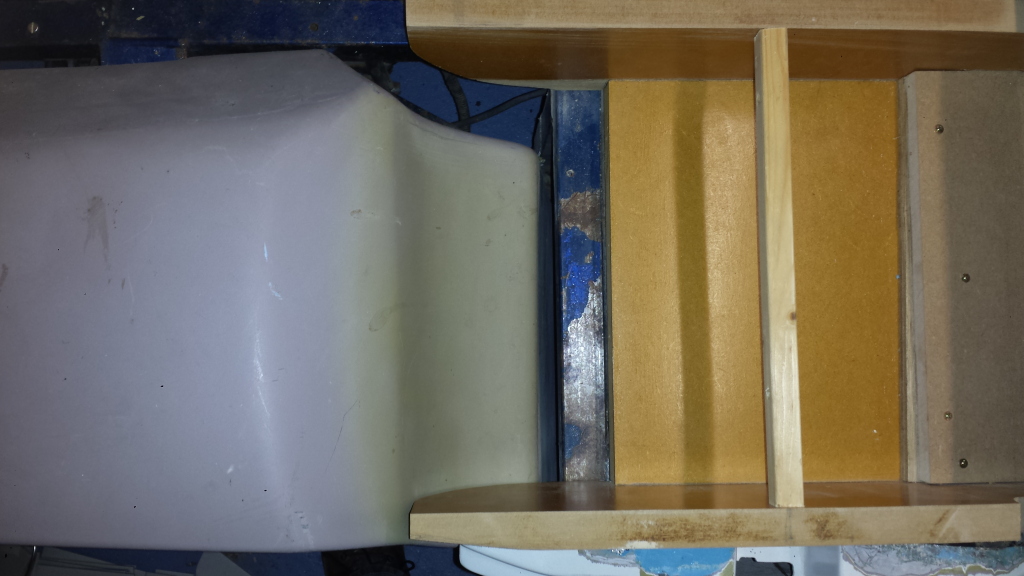I’ve started making the pattern for the air conditioning housing. It a box made of 25mm MDF that is built in position on the car. It probably didn’t need to be that thick as it makes for a very heavy construction, but it’s solid and should remain in shape as its gets worked into its final form. It also has the advantage of allowing deep features to be carved into the surface.
While the base of the box has to fit to the chassis steelwork, the upper section can be more stylish. Of course it needs to fit under the bonnet, but that should help to define the general shape.
At the front of the box the idea was to give it the rounded profile similar to the a Marcos pedal box. With that in mind I transferred the curve from the inner wing onto the box side. I adjusted this to be little more uniform and to give some clearance. Then I transferred the same curve to the outside. With both parts cut it I assembled the box. So far it’s all looking good.

That will never fit…
Once again the “informal” Marcos approach to mould making has caught me out. The inner wing profile is all over the place. The curve fits on the inside edge but is a least 20 mm out on the outside. That means the inner wing does not fit. In the picture below you can see the gap between the inner wing and the chassis.

How do I handle this? Well there are three options:
- Trim the outside profile by 20mm to make it fit the existing inner wing. The would make the a/c box asymmetric, but would fit any Marcos Mantula.
- Trim both profiles to make it fit and symmetrical. This may emphasise the asymmetry of the inner wing, but would also fit other installations. Space for the blower would be compromised.
- Re-design the inner wing. I was going to have to do a lot of work in this area anyway. The original wings are a very poor fit in any case.
In the the end it was an easy choice I’m going with option 3. This also has the benefit of giving the blower enough room for optimum airflow.
More in the next exciting instalment…